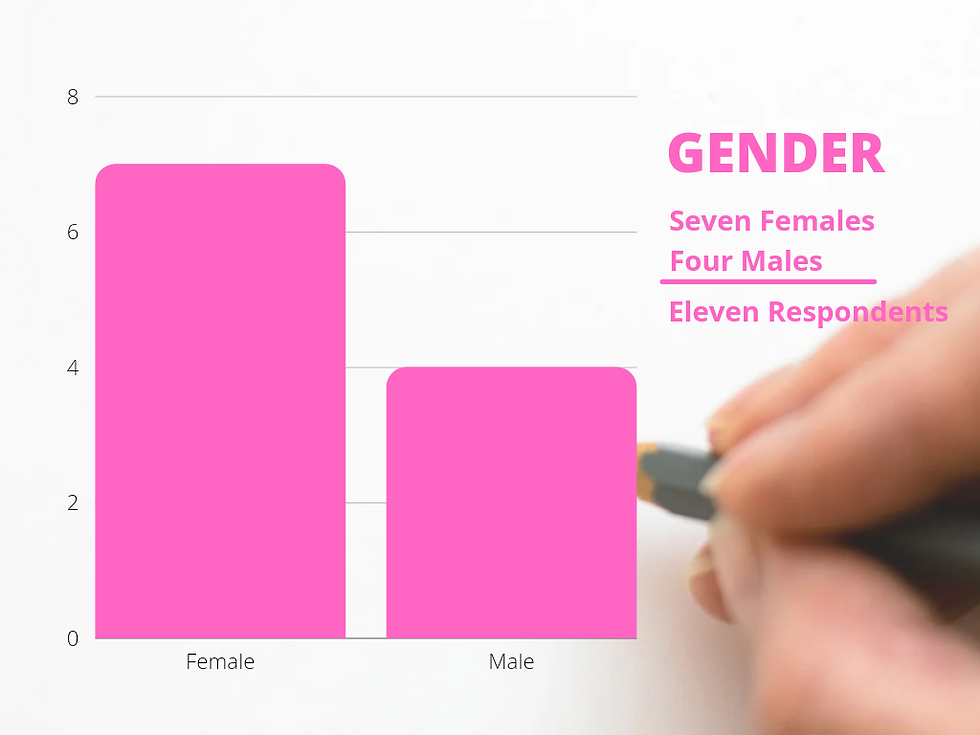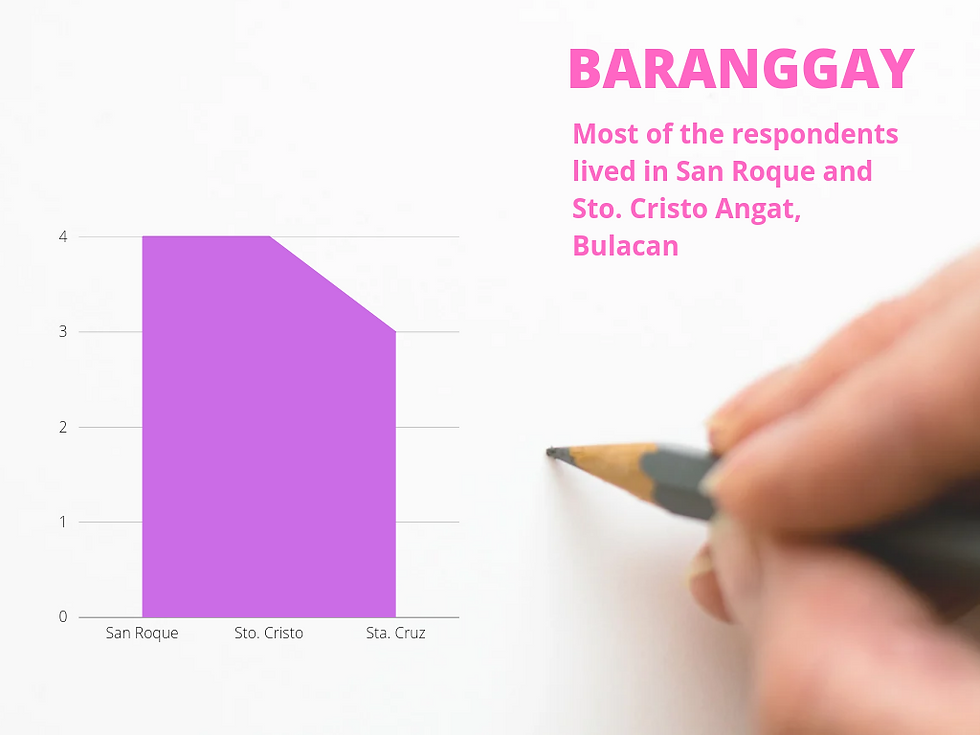ANGAT ANG BAYAN KO! (Community Issues/Concerns )
- Maryrose C. Sarmiento
- Mar 29, 2022
- 1 min read
This blog discusses community issues that are unable to receive any remedies or attention, as well as the needs of community members. Angat, Bulacan is the chosen community. For the survey, I gathered Eleven citizens as respondents. We first sought permission before performing the survey, which included personal information as well as shooting photographs and videos of them, and 11 out of 16 citizens agreed to participate.
History of Angat, Bulacan
Angat is a First Class Municipality and located in the 3rd District of the Province of Bulacan. It comprises of 16 Barangays with total land area of 6,526 hectares. The Total Population of Angat is 59,237 with Total Households of 12,944.
Angat is gotten its name from the Tagalog term "Angat," which signifies "an elevated piece of land" or a prominent village during the Spanish era. When the Spaniards arrived in town, they brought with them a new way of life for the entire population. Force, rather than conviction, was used to persuade people to accept the Catholic faith. In addition, the residents were forced to work, particularly during the construction of the church and the presidencia.
The residents of Angat played an important role in the revolution against the Spanish regime. The fight of Baras Bakal and the town proper was the responsibility of a large number of Veteranos de Revolution. The Veterans of the Revolution demonstrated their unwavering patriotism and nationalism.
In the province of Bulacan, a military government was founded in 1901. Don Mariano Santiago served as the first Governador Militar of Angat and later as the first Mayor. Angat was turned into a regular garrison during the Japanese occupation. The installation of the prison camp signaled the beginning of the reign of fear in the neighborhood. The guerilla organization and the Japanese army fought more actively and intensely until a chunk of the town was burnt and abandoned by the Japanese. When a Guerilla Sniper assassinated a Japanese officer, Barangay Niugan was also burned down.
Introduction
Community Issues is a problem that affects the community's residents. It is a collection of community-wide issues that citizens try to resolve. It is frequently the result of circumstances beyond an individual's control.
Angat, Bulacan has been facing some issues or concerns that they want to hear by the government. I gathered 11 citizens of Angat that answers the question "What issues or problems do you see in our Community?".
The survey was conducted in two ways, face to face and online survey. The survey was not mandatory or against the will of the participants. Participants were first asked if we could take their personal information, photos and videos of them and screenshot of our conversation. 11 out of 16 people that was being asked for a survey agreed and responded.
Citizens Response
Face to Face Survey:
Election Campaign
Leadership
Governance
Lack of Establishment
Collection of waste.
Online Survey:
Waste Management
Insufficient Roads
Improper Waste Disposal
Collection of Waste
Incomplete lists for Ayuda
Limited staff in Health Center
People who violate Environmental Laws
Lack of presence of local Government

Graphs/Charts



Conclusion
In conclusion, I agree with everything mentioned by the respondents about community issues here in Angat, Bulacan. Most of their answers fall under the Environmental Issue just like the Collection of Waste. Garbage often accumulates in our community because if the garbage truck is not broken, no one will collect it. The visible problem here is the lack of garbage collectors especially the garbage truck. One of the participants also mentioned people violating Environmental Laws, and this is true because there is often a lot of piled up clutter on the side of the road because many people just throw it everywhere. What I see as a problem here is the discipline of every Angateños, because not only nature will be destroyed but also the health of everyone.
Speaking of Health, there are two participants answered about Health Issues. Like limited staff in Health Center. Our health center in Angat is small and cannot accumulate many patients. They also lack of equipment and professional staff like nurses or doctor. We also don't have hospital nearby. Usually, patient need to go in another town just to go in a hospital.
The next majority issue from our community is the Government Issue. There is a lack of leadership and platforms for our community and government failed to filled our needs. We have Mayor for a long time, he is now old but he never gets off of being our Mayor because people voted for him and he always win. He is a good Mayor, you can count on him but what is the problem is that he is not giving attention to our resources that can use for filling the citizens needs like hospital.
Communities may be able to handle their own problems, but they frequently require outside assistance, such as money from governments, corporate partners, or organizations. Government assistance, such as laws, rules, policies, programs, or public supervision, may be required to solve community problems.
Reference:
Photo Credit:




Comments